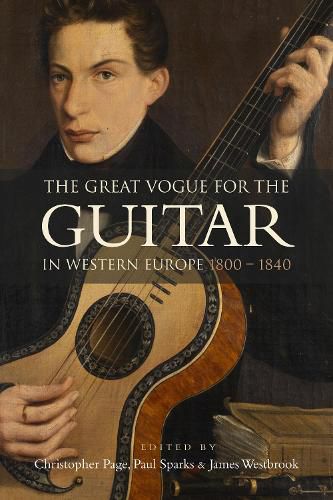Readings Newsletter
Become a Readings Member to make your shopping experience even easier.
Sign in or sign up for free!
You’re not far away from qualifying for FREE standard shipping within Australia
You’ve qualified for FREE standard shipping within Australia
The cart is loading…






Contemporary critics viewed the fashion for the guitar with sheer hostility, seeing in it a rejection of true musical value. After all, such trends advanced against the grain of mainstream musical developments of ground-breaking (often Austro-German) repertoire for standard instruments. Yet amateur musicians throughout Europe persisted; many instruments were built to meet the demand, a substantial volume of music was published for amateurs to play, and soloist-composers moved freely between European cities. This book follows these lines of travel venturing as far as Moscow, and visiting all the great musical cities of the period, from London to Vienna, Madrid to Naples.
The first section of the book looks at eighteenth-century precedents, the instrument - its makers and owners, amateur and professional musicians, printing and publishing, pedagogy, as well as aspects of repertoire. The second section explores the extensive repertoire for accompanied song and chamber music. A final substantive section assembles chapters on a wide array of the most significant soloist-composers of the time. The chapters evoke the guitar milieu in the various cities where each composer-player worked and offer a discussion of some representative works. This book, bringing together an international tally of contributors and never before examined sources, will be of interest to devotees of the guitar, as well as music historians of the Romantic period.
$9.00 standard shipping within Australia
FREE standard shipping within Australia for orders over $100.00
Express & International shipping calculated at checkout
Contemporary critics viewed the fashion for the guitar with sheer hostility, seeing in it a rejection of true musical value. After all, such trends advanced against the grain of mainstream musical developments of ground-breaking (often Austro-German) repertoire for standard instruments. Yet amateur musicians throughout Europe persisted; many instruments were built to meet the demand, a substantial volume of music was published for amateurs to play, and soloist-composers moved freely between European cities. This book follows these lines of travel venturing as far as Moscow, and visiting all the great musical cities of the period, from London to Vienna, Madrid to Naples.
The first section of the book looks at eighteenth-century precedents, the instrument - its makers and owners, amateur and professional musicians, printing and publishing, pedagogy, as well as aspects of repertoire. The second section explores the extensive repertoire for accompanied song and chamber music. A final substantive section assembles chapters on a wide array of the most significant soloist-composers of the time. The chapters evoke the guitar milieu in the various cities where each composer-player worked and offer a discussion of some representative works. This book, bringing together an international tally of contributors and never before examined sources, will be of interest to devotees of the guitar, as well as music historians of the Romantic period.